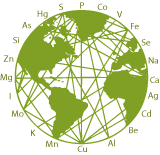Gadolinium in Medicine
Blaurock-Busch An Evaluation and Update in International Journal of Oncology Research and Therapy
Gadolinium-Based Contrast Agents (GBCA) are intravenous drugs used in diagnostic imaging procedures to enhance the quality of Magnetic Resonance Imaging (MRI) or Magnetic Resonance Angiography (MRA). FDA alerts concerning potential side effects increased patient and medical concerns. More recent FDA information indicate that ionic gadolinium is released from some GBCAs, potentially causing gadolinium toxicity. We checked if gadolinium is excreted renally without intervention after previous administration of GBCAs, and if chelating agents are effective in removing gadolinium that may have remained in the body after GBCA administration. Through the evaluation of our internal database and the studies of others, we concluded that no clear consensus exists at this time. While the DTPAs may be the choice of chelators for the removal of gadolinium from the human body, further studies are needed to prove this. It seems clear, however, that microcyclic GBCAs provide a lesser risk of causing gadolinium retention and gadolinium toxicity symptoms.
Gadolinium In Medicine-An Evaluation and Update – SkepticMed Publishers
Safety of MRI
Information on What You Should Know before the MRI
Safety of Gd-Containing Contrasting Agents
Gadolinium-Based Contrast Agents (GBCA) are intravenous drugs used in diagnostic imaging procedures to enhance the quality of magnetic resonance imaging (MRI) or magnetic resonance angiography (MRA).
Studies indicate that of all the GBCAs, the products Dotarem (Gadoterat-Meglumin), Gadavist (Gadobutrol) and ProHance (Gadoteridol) are less likely to be retained by the body, and therefore are less likely to cause health problems.
Patients who have received GBCAs can use the following laboratory tests to evaluate their Gadolinium-status:
- Hair analysis reveals if Gd has been stored in body tissues. For this test, the GBCA-exposure has to be at least 4months ago.
- Urine analysis shows how much Gd is excreted. Gd is naturally eliminated by the body. Urine tested soon after GBCA exposure shows much higher test values than urine tested weeks or months later.
